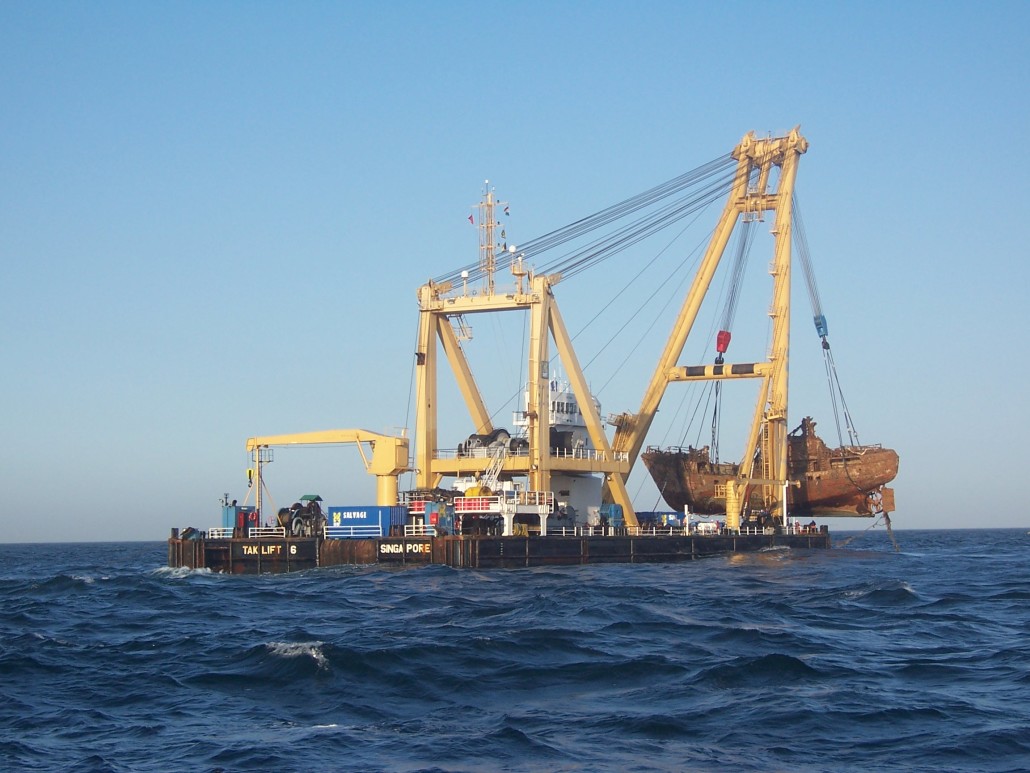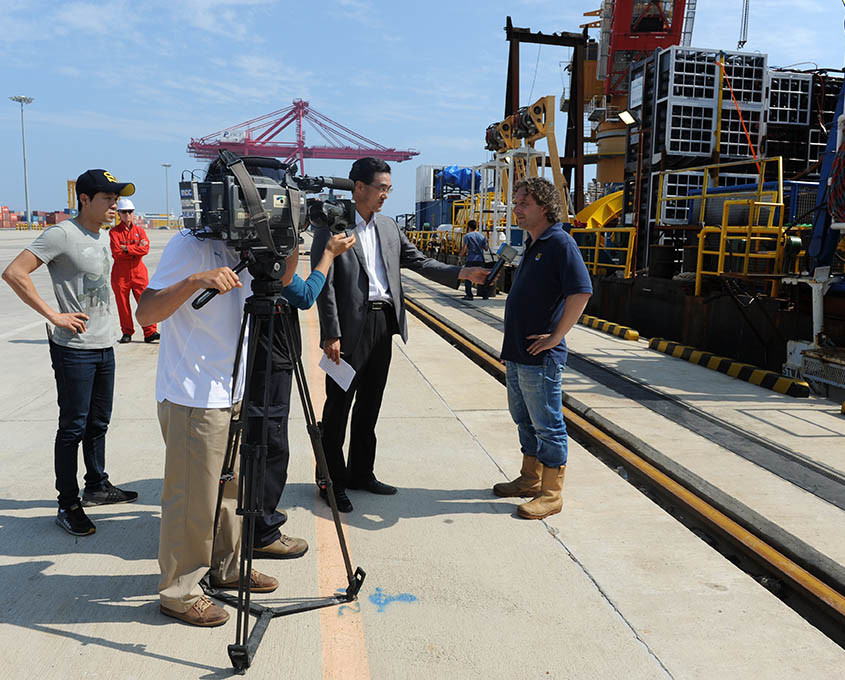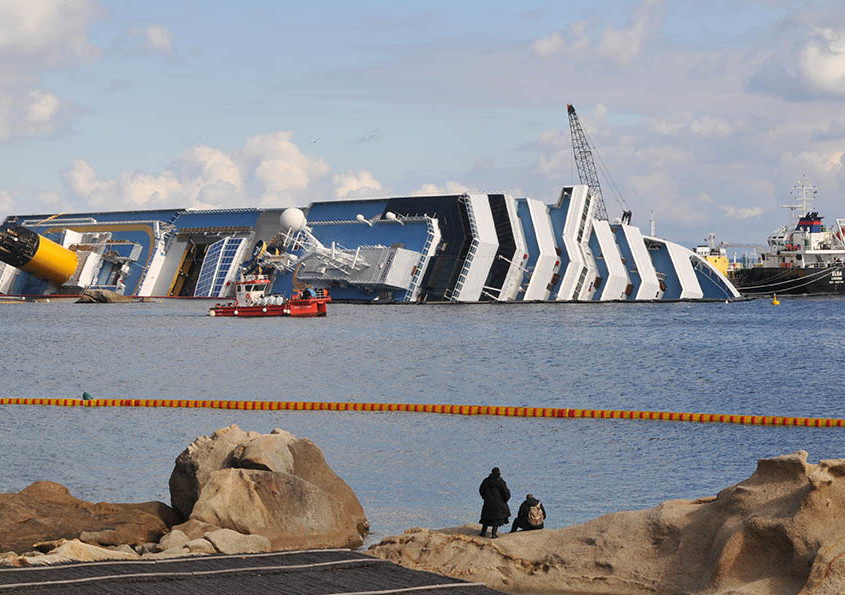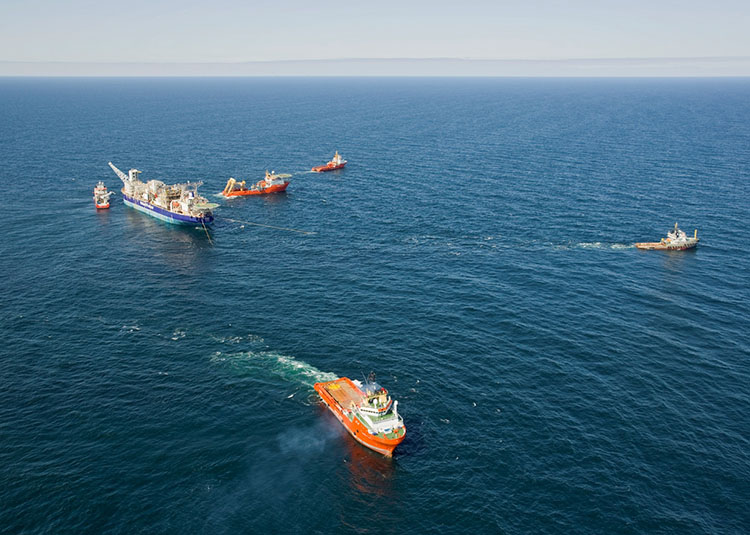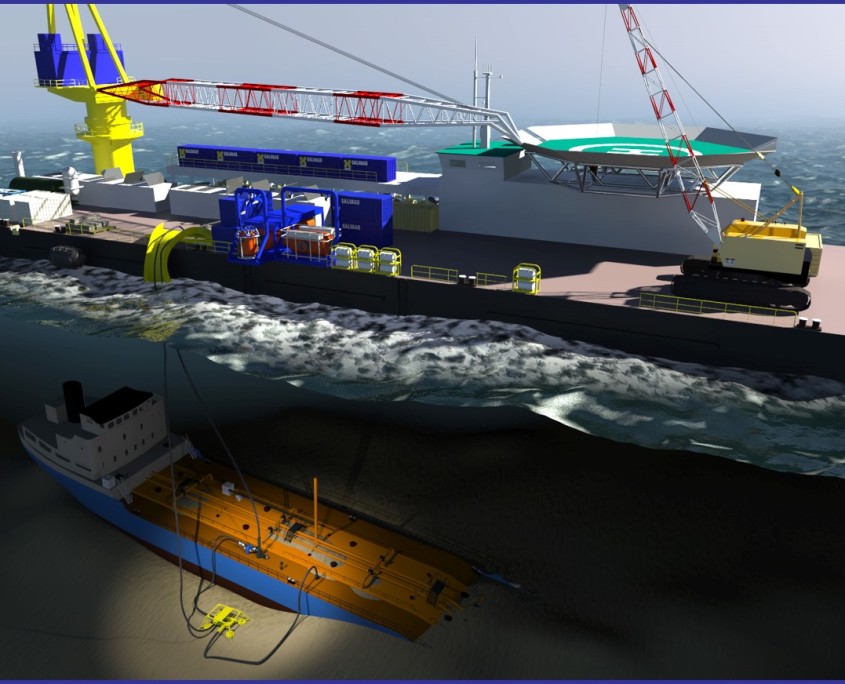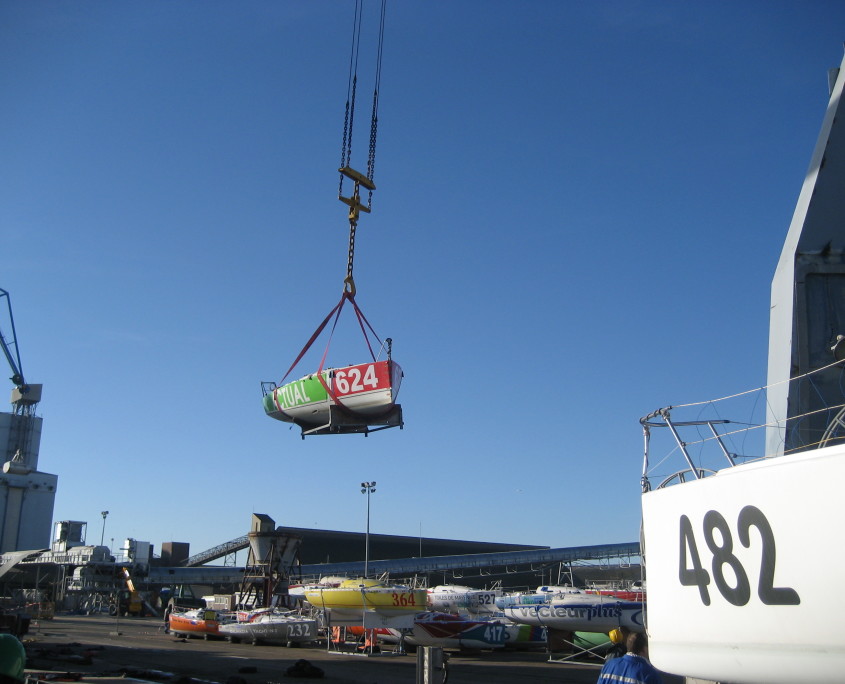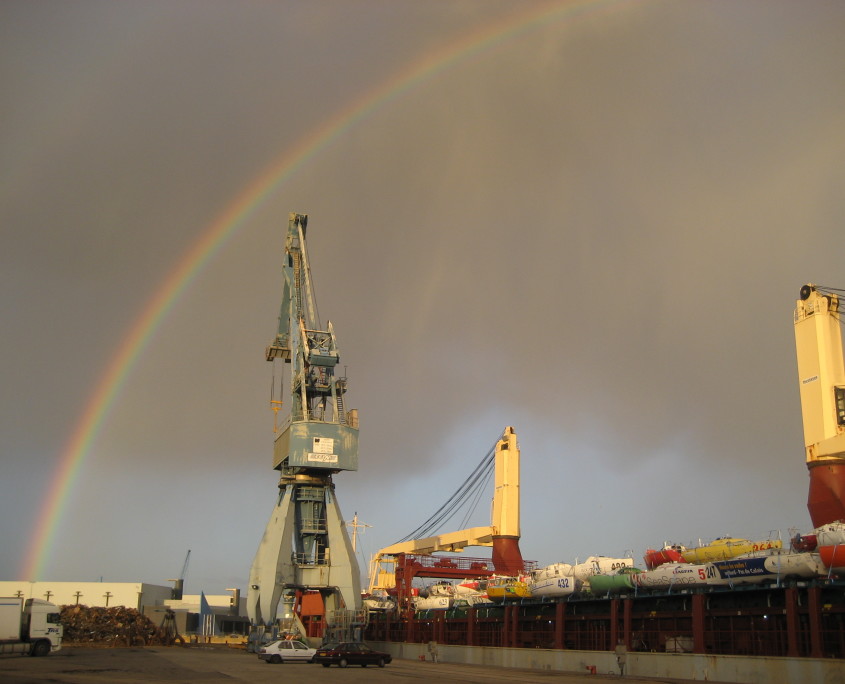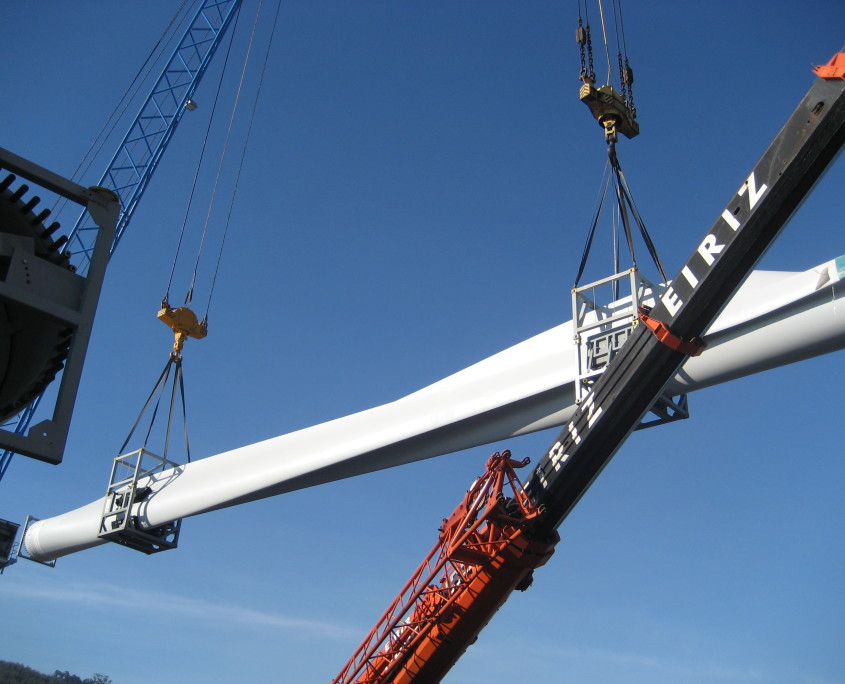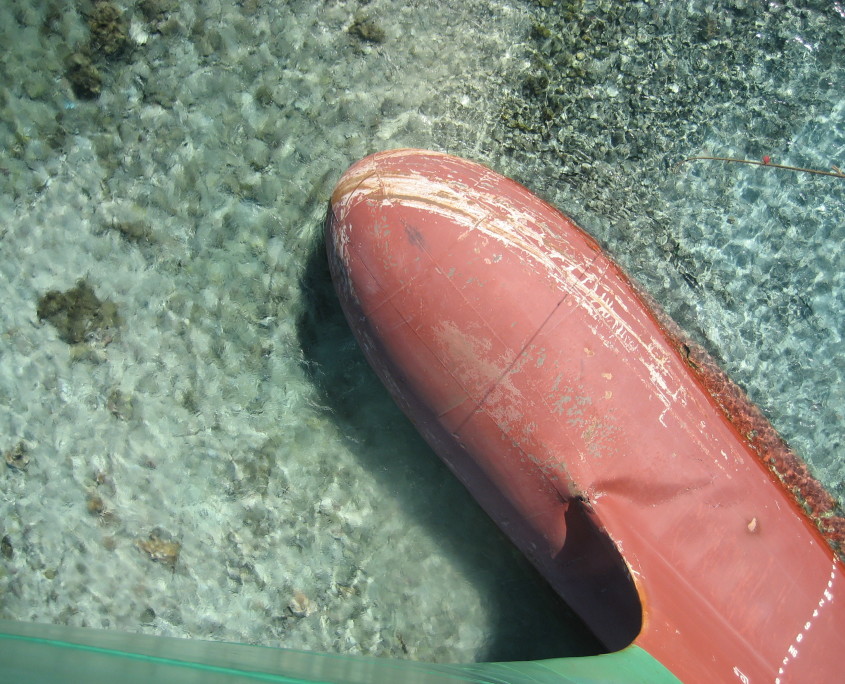Re-Floating MV FLASH
The mv FLASH grounded at the most northern tip of Africa. All fuels were removed from the bulk carrier FLASH and after extensive lightering of cargo she was refloated and towed to a safe area were she was put at anchor.
Emergency Response & Oil removal
Costa Concordia Emergency Response & Oil removal
On Friday the 13th of January the cruise vessel Costa Concordia, carrying over 4,000 passengers and crew, hit a rock and subsequently encountered stability problems, whilst passing the Isle of Giglio in Tuscany. Eventually the Costa Concordia grounded and listed to approximately 56° on her starboard side. Fortunately, the majority of the passengers and crew were safely evacuated yet as it turned out later, 32 people regrettably lost their lives.
Upon becoming aware of the evacuation of the vessel, SMIT approached the owners and underwriters of the Costa Concordia in order to offer its salvage expertise and experience. SMIT decided to mobilize a team of salvage experts and critical, portable salvage equipment immediately and on speculation; this in order to prevent wasting valuable mobilization time during the contract negotiations.
In the days following the accident, a contract was awarded to SMIT Salvage and its longstanding Italian salvage partners Tito Neri S.rl. for the removal of bunker oil, provision of pollution control and to clean up debris emanating from the vessel. The estimated amount of bunkers in the vessel was 2,200Mt of intermediate fuel oil, 185Mt of marine gas oil/diesel and lubricants, distributed over 17 tanks. Whilst the mobilization of further specialist equipment (hot tap, heating equipment, dive equipment, etc.) proceeded, a crane barge from Livorno was prepared for working alongside the vessel.
The salvage master and his team – mounting up to approximately 60 employees from Neri and SMIT – continued to prepare (diving inspections, installing valves etc.) for the recovery of pollutants and to obtain the required permits for this operation with the various maritime and local authorities. A pollution control plan was drafted and approved by the authorities and no less than 2,000 meters of offshore oil booms were deployed around the vessel and the various beaches of Giglio Island. In addition, a small flotilla of oil recovery vessels was on stand-by in close vicinity of the vessel.
After four weeks of preparatory works, permitting and awaiting a favorable weather window, the Salvage Team commenced the oil recovery operation, which went very smoothly. The oils were transferred to an oil reception recovery vessel. Works were completed on March the 24th but SMIT also concluded a caretaking contract while the wreck removal bid tenders were being considered. SMIT eventually demobilized the team on June the 26th. An unprecedented and heartfelt send-off by the local authorities, stakeholders and community was held in honor of SMIT’s successful work and cooperative spirit
Wreck Removal
Salvaging NOMO wreck’s Rijkswaterstaat (Dutch Government)
Wreck removal to ensure safe navigation: NOMO wrecks
Deepwater Oil Recovery
The task was to remove oil from the wreck of the tanker ‘Kyung Shin’. This tanker went down many years ago off the country’s south east coast, in a water depth approaching 100 m.
Remove oil from 100 m water depth
The task was to remove oil from the wreck of the tanker ‘Kyung Shin’. This tanker went down many years ago off the country’s south east coast, in a water depth approaching 100 m. The crane barge ‘Smit Borneo’ was mobilised as the surface platform for this operation. The spread included a saturation spread and team, hot-tap equipment (for pumping from the submerged tanks) and a newly designed tank heating system. The operation recovered about 500 tonnes of HFO from the vessel’s tanks.
Tanker sank in 1988
The Korean fuel oil tanker ‘Kyung Shin’ sank in 1988. She was lost in the Sea of Japan, close to the South Korean port of Pohang. Given the depth of the wreck, it was decided not to remove the vessel. However, action was taken to reduce the environmental threat.
Persistent oil seepage
Nevertheless, over the years there has been persistent oil seepage from this wreck. The leakage was small, but KOEM carried out a risk analysis, taking into account the possibility of a larger scale release of oil from the ‘Kyung Shin’. It was at this point that the Korean authorities approached SMIT Salvage, an organisation with a solid track record for successful oil recovery.
Wreck inspection
During 2010 KOEM contracted SMIT Salvage for the task of carrying out a wreck inspection. In response, the crane barge ‘Smit Borneo’ and the multipurpose tug ‘Smit Angola’ were mobilised. The spread included a saturation diving system and other specialised equipment, to take account of the depth at which the inspection would be performed.
Detailed pollutant recovery plan
The diving team surveyed the wreck, measured the volumes remaining in each tank and took samples. Several compartments were found to contain various grades of fuel oil. This information was then used to develop a detailed pollutantrecovery plan. The plan was accepted and SMIT Salvage was then awarded a contract to remove the oil during the summer of 2011.Specialised equipment‘Smit Borneo’ was prepared for this task. The vessel was fitted out with equipment from SMIT’s warehouse in Rotterdam, including a hot-tap system, boilers, heat-exchangers and special pumps and hoses. Meanwhile, the SMIT Subsea SAT-3 saturation diving system was mobilisedfrom Dubai.Success factor the right temperature‘Smit Borneo’ and 80 tbp tug ‘Union Boxer’, departed Singapore in early June for this oil recovery, which proved to be something of a technical tour de force. One crucial success factor involved producing the correct temperatures for optimum pumping of the various fuel oil grades. This was achieved by the use of warm water heating, to reach the required temperature for pumping. Spiral heat exchangers were inserted into each tank, by means of the hot-tap system. When oil reached the surface, it was passed through an oil-water separator. During the operation, completed on July 10, a total of 12 tanks were emptied.
A small gallery
Some pictures of later projects Lees meer

